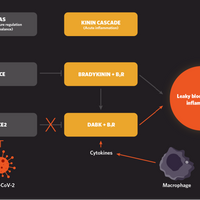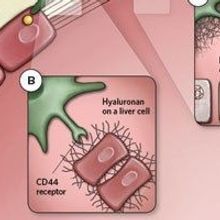Login
Subscribeimmunology, infographic

Infographic: Inducing Active Immunity Against Opioid Overdose
Tori Rodriguez | Jun 13, 2022 | 3 min read
How scientists aim to induce an immune response against addictive drugs

Infographic: How to Ferret Out SARS-CoV-2 in Sewage
Ruth Williams | May 1, 2021 | 1 min read
Researchers use magnetic nanoparticles and liquid-handling robots in an effort to detect COVID-19 outbreaks early.

Infographic: Envisioning Macrophages
Ashley Yeager | Mar 1, 2021 | 1 min read
Researchers find different distributions of the immune cells in young, older, and diseased eyes.

Editor’s Picks of The Scientist’s Best Infographics of 2020
Jef Akst | Dec 15, 2020 | 2 min read
This year’s most captivating illustrations tell stories from the micro scale—such as newborn neurons in the adult brain and bacteria in the infant gut—to the scale of entire ecosystems, including reintroduced predators and rising seas.

Infographic: A Cellular Defense Against Ebola Virus
Rachael Moeller Gorman | Dec 1, 2020 | 1 min read
A recent study sheds light on a previously unknown mechanism for fending off the pathogen, and potentially other viruses as well.

Infographic: SARS-CoV-2 Interferes with Bradykinin Regulation
Alakananda Dasgupta | Aug 26, 2020 | 1 min read
The leaky blood vessels and lung fluid build-up in some COVID-19 patients might be explained by the virus’s corruption of an inflammation safeguard.

Infographic: How Immunotherapy Could Boost Stem-Like T Cells
Daniel E. Speiser and Werner Held | Jul 13, 2020 | 3 min read
Cancer therapies could potentially be more effective if their development took into account the cells that give rise to tumor-fighting cells.

Infographic: How Cells Use Decoys to Defend Against Pathogens
Rachael Moeller Gorman | Jun 1, 2020 | 1 min read
Specialized exosomes sop up bacterial toxins, a study finds.

Infographic: How NETs Work
Borko Amulic and Gabriel Sollberger | Oct 1, 2019 | 3 min read
While neutrophil extracellular traps help guard the body from infection, they also can contribute to a range of diseases.

Infographic: Immune Cell Monitoring Via a Skin Patch
Ruth Williams | Mar 1, 2019 | 1 min read
A stick-on patch enables sampling of immune cells in the skin.

Infographic: The Omentum’s Role in Health and Disease
Selene Meza-Perez and Troy D. Randall | Oct 1, 2018 | 1 min read
Belly fat helps fight infection, but is also a common site of metastasis.

Infographic: How the Zebrafish Got Its Stripes
Catherine Offord | Apr 30, 2017 | 1 min read
Immune cells called macrophages shuttle cellular messages in the skin.

Infographic: Antibody Cancer Therapy
Ruth Williams | Mar 31, 2017 | 1 min read
An experimental technique removes T cells that aid in vitro tumor growth.

Macrophages Respond to Liver Injury
Ashley P. Taylor | Jul 31, 2016 | 1 min read
In mice, immune cells from the body cavity surrounding organs arrive at the site of damage to chew up the nuclei of dead cells.
